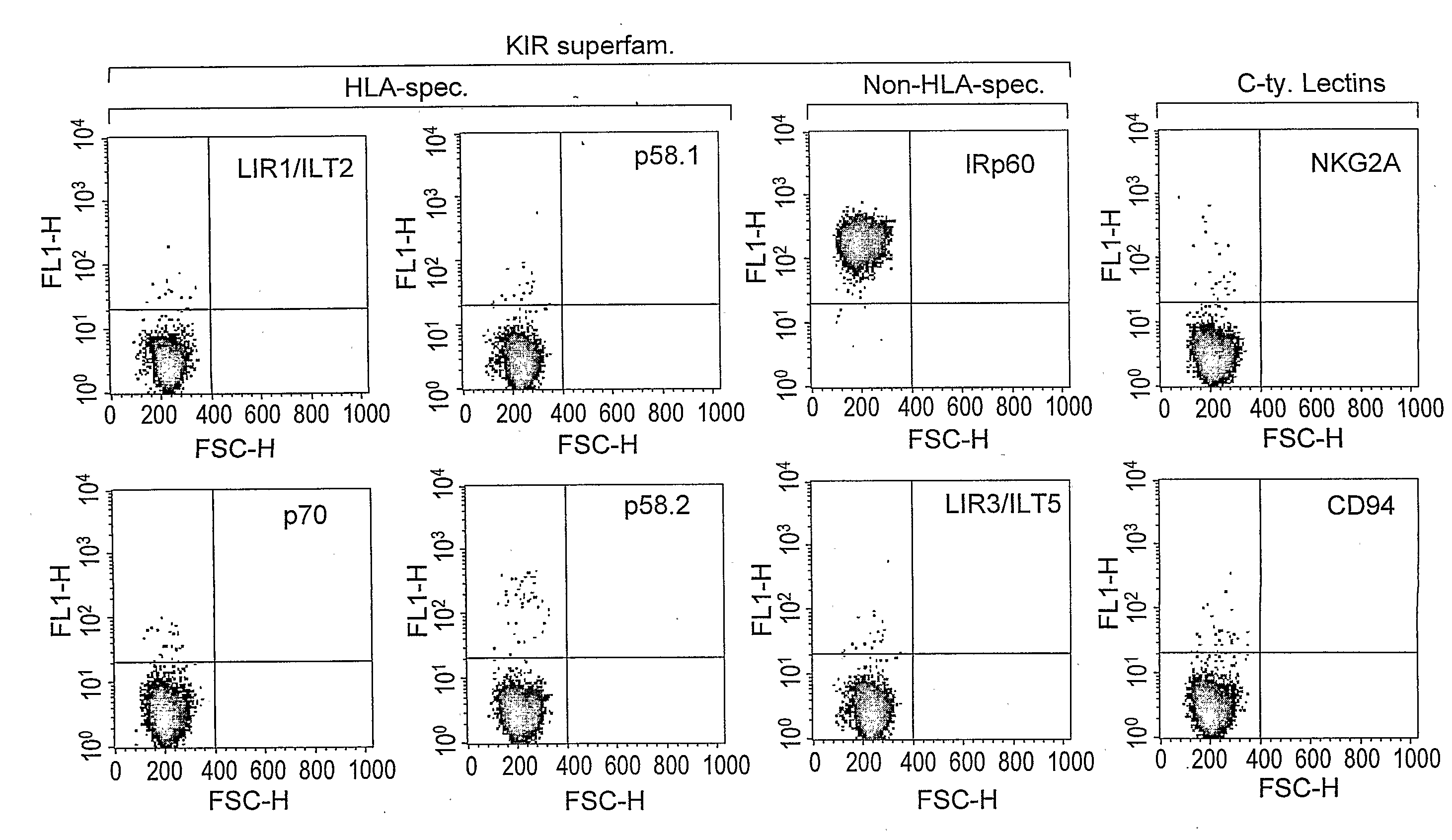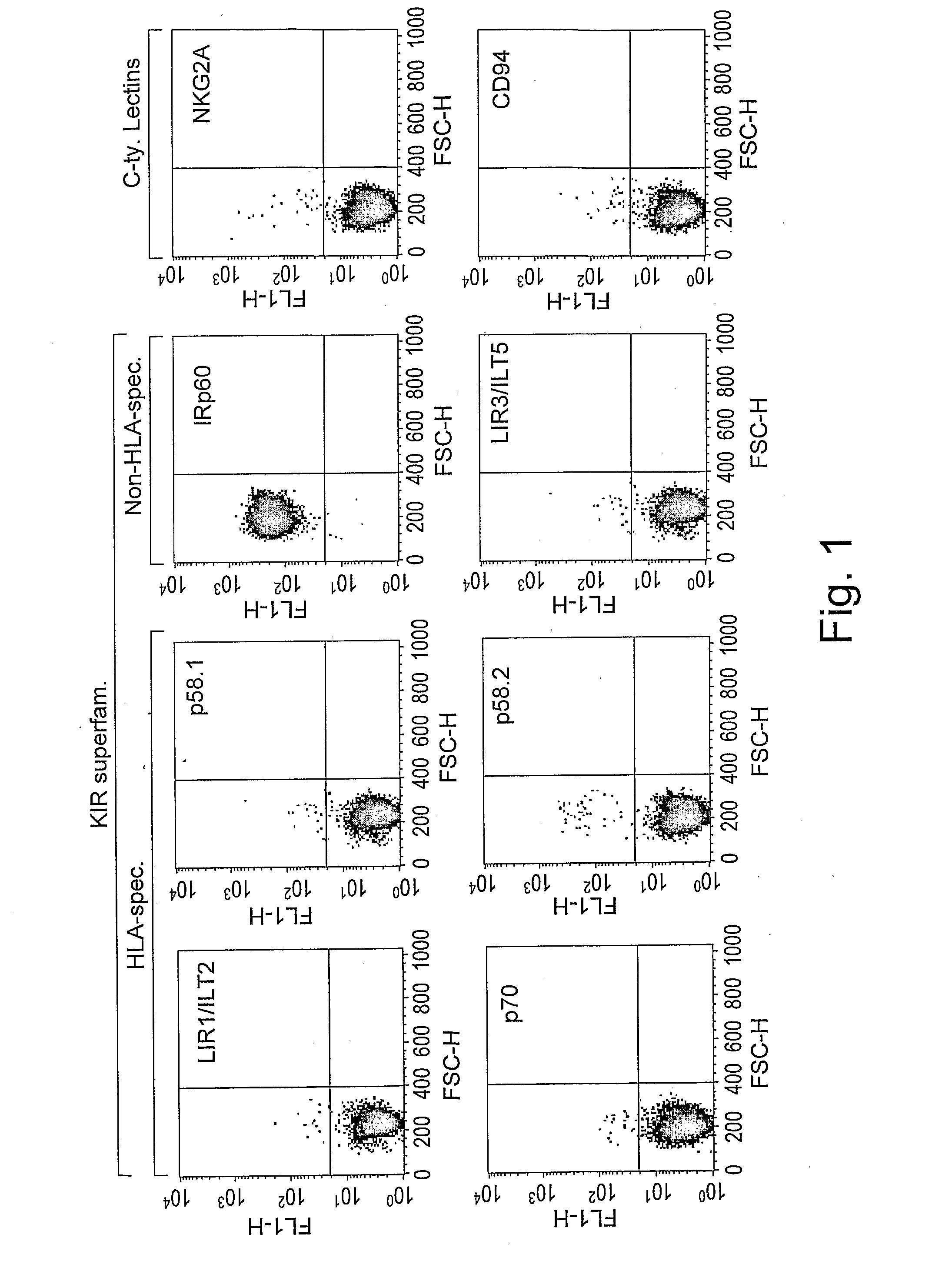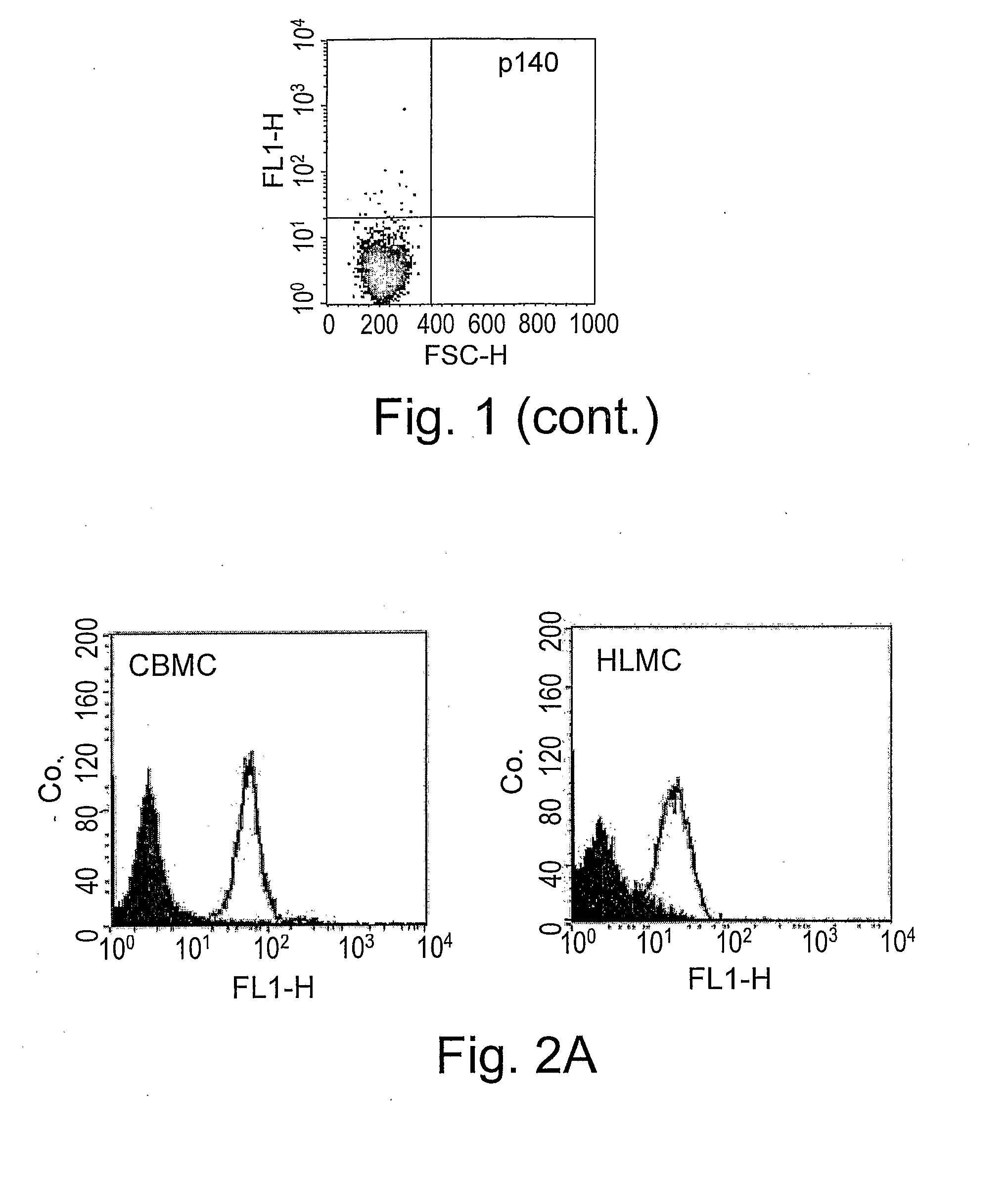Bi-Specific Complexes for Targeting Cells Involved in Allergic-Type Reactions, Compositions and Uses Thereof
a technology of bi-specific complexes and antibodies, applied in the field of immunopharmacology, can solve the problems of ineffective newly developed immunopharmacological treatments targeting a single antibody (e.g. ige), t cell cytokine (e.g. anti-il-5) or several transcription factors (e.g. stat-6, -1), and achieves the effect of inhibiting eosinophil activity and inhibiting mast cell activity
- Summary
- Abstract
- Description
- Claims
- Application Information
AI Technical Summary
Benefits of technology
Problems solved by technology
Method used
Image
Examples
example 1
CBMC Express IRp60
[0197]In order to investigate the expression pattern of inhibitory receptors on human mast cells, a screening approach was employed, using a large panel of mAbs recognizing various inhibitory receptors. As shown in FIG. 1A, FACS analysis revealed that CBMC express high levels of IRp60, but not LIR1 / ILT2, LIR3 / ILT5, p58.1, p58.2, p70, p140 or NKG2A / CD94 [n=10]. One out of the ten donors expressed CD94 but not NKG2A. In addition, CBMC were positively stained for FcγRIIB, a known inhibitory receptor [data not shown].
[0198]In order to evaluate whether mature tissue mast cells express IRp60, HLMC were stained for IRp60 expression. As shown in FIG. 1B, HLMC express significant levels of IRp60 as well [n=3]. Next these cells were screened with different mAbs recognizing IRp60 [i.e. P192 and E59] to examine whether this expression pattern is antibody dependent. Both antibodies recognized similar levels of IRp60 on the surface of CBMC and HLMC [n=3, 5 respectively, data not...
example 2
Eosinophil Derived MBP Down-Regulates IRp60 Expression on CBMC
[0199]The inventors next investigated the capability of various mediators, found in the allergic inflammatory milieu, to modulate IRp60 expression on CBMC. For this, CBMC were cultured for various time points in the presence of TNF-α, IL-3, IL-4, monomeric IgE, NGF and eosinophil derived MBP. With the exception of MBP, none of the mediators significantly influenced IRp60 expression. As shown in FIG. 2, MBP induced a decrease in the expression level of IRp60 starting at 12 hours reaching a significant effect after 24 hours [n=3, p<0.01]. The effect of MBP was charge-independent since poly-L-arginine at an equimolar range [25-100 nM] did not affect IRp60 expression.
example 3
IRp60 Cross-Linking Inhibits IgE-Dependent Mediator Release from CBMC
[0200]The expression of IRp60 on the surface of CBMC suggests that their responses may be regulated by this receptor. To evaluate the ability of IRp60 to inhibit CBMC degranulation, CBMC were sensitized with IgE and triggered to degranulate using an anti-IgE antibody or compound 48 / 80 in an anti-IRp60 coated plate. As shown in FIGS. 3A and 3B, cross-linking of IRp60 strongly and significantly inhibited IgE-mediated release of β-hexosaminidase [47.61±2.00% vs. 11.71±1.12% with anti-IRp60, p<0.001], tryptase [60.90±7.35% vs. 14.11±1.45% with anti-IRp60, p<0.001] and IL-4 [8.41±1.19 pg / mL vs. 0.32±0.09 pg / mL with anti-IRp60, p<0.001]. Interestingly, as shown in FIG. 3C, cross-linking of IRp60 did not inhibit compound 48 / 80-mediated release of β-hexosaminidase, tryptase and IL-4 [data not shown].
PUM
| Property | Measurement | Unit |
|---|---|---|
| Composition | aaaaa | aaaaa |
| Flexibility | aaaaa | aaaaa |
| Inhibition | aaaaa | aaaaa |
Abstract
Description
Claims
Application Information
 Login to View More
Login to View More - R&D
- Intellectual Property
- Life Sciences
- Materials
- Tech Scout
- Unparalleled Data Quality
- Higher Quality Content
- 60% Fewer Hallucinations
Browse by: Latest US Patents, China's latest patents, Technical Efficacy Thesaurus, Application Domain, Technology Topic, Popular Technical Reports.
© 2025 PatSnap. All rights reserved.Legal|Privacy policy|Modern Slavery Act Transparency Statement|Sitemap|About US| Contact US: help@patsnap.com



